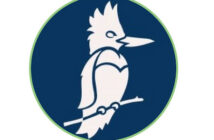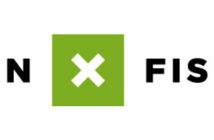Alexandria, VA – June 9, 2009 – Despite the sluggish economy and cut backs in consumer spending, there are strong indications that recreational angling remains one of the largest outdoor recreational activities in the nation as well as one of the most solid industries in the United States. Annually, nearly 40 million anglers generate over $45 billion in retail sales with a $125 billion impact on the nation’s economy creating employment for more than one million people.
“People want a breath of fresh air, literally and figuratively, and from what we’re being told; anglers are heading outdoors and putting a line in the water,” said American Sportfishing Association (ASA) President and CEO Mike Nussman. “Although anglers, just as the general public, seem to be deferring higher end purchases, it’s clear that people are going fishing and purchasing tackle.”
According to Tom Mackin, president, RapalaUSA, an international tackle manufacturing company with U.S. operations located in Minnesota, business continues to be good. “I’m pleased to say that Rapala reports a double digit sales increase in North America for the first quarter of 2009,” said Mackin. “Business is looking very strong for us.”
Gary Remensnyder, executive vice president, Sales and Marketing, for Pure Fishing, Inc., a global company with multiple tackle brands headquartered in Columbia, S.C., commented, “What we’re seeing in the outdoor marketplace points to an increase in family fishing. Fishing is an inexpensive way for families to enjoy quality time together outdoors. We’re seeing an increase in sales, particularly in products for children and women, as well as for the avid recreational angler. Our brands, especially Shakespeare and Berkley, benefit from this trend because of a wide product assortment ranging from beginners to the most dedicated angler.”
Going hand in hand with strong tackle sales are increases in fishing license sales. A sample survey of state fish and wildlife agencies indicates that 2009 fishing license sales are up 11 percent in the first quarter (January – March) compared with the first quarter of 2008. Additionally, there are strong indications that sales in the second quarter will be stronger in 2009 than in 2008 with some state agencies reporting increases which continued through the Memorial Day weekend.
“An 11 percent overall increase in state fishing license sales is significant,” said ASA President and CEO Mike Nussman, “particularly during the first quarter of the year when license sales tend to hold steady. In fact, these are the best numbers we’ve seen in several years.”
According to Dennis Schenborn, section chief, Planning, Budget and Outreach, for the Wisconsin Department of Natural Resources, the economy does affect license sales. “We’ve been collecting license sales data for 35 years and we know that during tough economic times, Wisconsin’s fishing license sales increase. We’ve experienced an eight percent increase in fishing license sales up through Memorial Day weekend compared with 2008. This year, we expect to sell more than 1.5 million fishing licenses.”
“In times of economic stress, many people turn to simple, outdoor pursuits that are easy to do, are close to home, are not expensive and can be enjoyed by everyone in the family,” said Jeff Pontius, president, ZEBCO Brands and ASA’s Board of Directors chairman. “Recreational fishing certainly fits that description. We know from past experience that in recessionary times, fishing retains, and even increases, in its popularity.”
The Recreational Boating and Fishing Foundation (RBFF), established through the efforts of the sportfishing and boating industries and state fish and wildlife agencies, is taking steps to increase participation in fishing and boating through marketing and education campaigns aimed at both novice and avid anglers. RBFF’s State Direct Mail Marketing Program, a three-year initiative to recruit and retain lapsed anglers is seeing success. Thirty-two states currently participate in the State Direct Mail Marketing Program which has contributed more than $4 million in gross revenue to date for state fisheries management efforts through increased license and tackle sales.
Interesting statistics on sportfishing include:
- The three states with the most anglers are Florida (2.77 million), Texas (2.52 million) and California (1.73 million).
- The top three states in terms of jobs supported by sportfishing are Florida (75,100), Texas (59,000) and Minnesota (43,100).
- The number of U.S. anglers is greater than California’s population.
- One out of every three anglers fishes for largemouth bass, America’s most popular game fish. Flounder is the most-targeted saltwater fish.
- Forty-five percent of anglers come from cities of one million or more people.
- Fifty-one percent of anglers have a household income greater than $50,000 per year and 17 percent have incomes in excess of $100,000 per year.
- Over half of all anglers have attended college.
- Twenty-five percent of anglers are women.
- Nearly half of all anglers are between 35-54 years of age.
ASA’s data was compiled by Southwick Associates, Fernandina Beach, Fla.
The American Sportfishing Association (ASA) is the sportfishing industry’s trade association, committed to looking out for the interests of the entire sportfishing community. We give the industry a unified voice speaking out when emerging laws and policies could significantly affect sportfishing business or sportfishing itself. We invest in long-term ventures to ensure the industry will remain strong and prosperous as well as safeguard and promote the enduring economic and conservation values of sportfishing in America. ASA also represents the interests of America’s 60 million anglers who generate over $45 billion in retail sales with a $125 billion impact on the nation’s economy creating employment for over one million people.
—
ASA Communications
American Sportfishing Association
225 Reinekers Lane, Suite 420
Alexandria, VA 22314
(703) 519-9691 ex. 222




No Comments
Pingback: Stuff worth reading between boozing and barbecuing – 07/02/09 | Michael Gracie